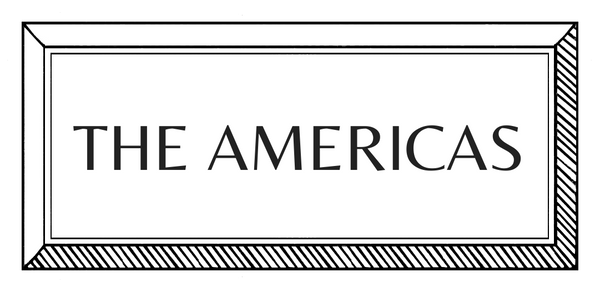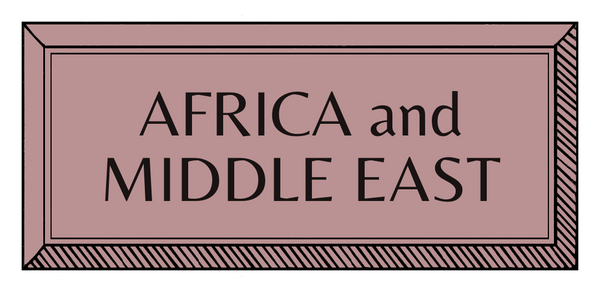MAKERS | EUROPE | UK | PLASTER
Alexander Griffin | Plaster Artist

Alexander Griffin is a skilled plaster caster and designer who has meticulously developed his craft over the years, working from a family-restored studio in Cambridgeshire. Drawing from his hands-on experience and love for materials, Griffin’s creations combine classical elegance with contemporary flair.
After studying History and History of Art, British artist Alexander Griffin joined his family's restoration project and searched for a complementary artistic pursuit, which led him to a new vocation: casting beautiful, sober works in plaster. Taking influence from cast collections, like that of the Sir John Soane museum, he began casting architectural elements and sculptural fragments, expanding his portfolio in his small workshop in Cambridgeshire.
Impressively self-taught - he has undertaken no training or even short courses - Alexander leapt into the practice, "head-first with a healthy amount of trial and error", aptly referencing Orson Welles' quote: "It’s only when you know something about a profession that you are timid or careful." Now, as well as casts of extant objects and artefacts, the accomplished maker will soon be releasing a range of his own original functional interior objects.
Can you describe your process? Is it very laborious making your plaster casts?
It can be. Not as lengthy as carving them from a block of stone, of course - it’s all relative - but yes, it can be time consuming and sometimes quite exacting. The size and intricacy of the object can make the process more complex and slow. That said, making any of the casts is slower than it might appear, because they are built up in layers, adding various materials to reinforce them, which will ultimately be hidden. I also spend a reasonable time with every cast after making it, to smooth or remove any imperfections that may have come about during the casting.

Ionic Capital; Alexander Griffin.
Which objects do you find yourself most drawn to interpret?
In my view, one of the charms of plaster is that its surface responds to and captures light and shade very well, so, when selecting an object, ideally its shape will allow for some chiaroscuro in different lights. Generally, I describe the things I choose as architectural and sculptural objects. They may literally be sculptures or architectural elements, or things possessing these qualities in a more abstract sense - a rock, a shell, a seed-head. Beyond form, if the object has some inherent meaning, history or symbolism attached to it, that's even better.
What qualities do you most admire in artistic forms?
I once heard a favourite musician of mine, Andrew Weatherall, describe a song as a “cultural artefact”. I think this is a very enlightened term to apply to any artistic form, because it captures one quality I find admirable, in any art piece, which is that as well as engaging us in all the clear ways - aesthetically, emotionally, intellectually - it also usually represents something about the period or cultural context from which it springs. Otherwise, craftsmanship. Any evidence of the time, care, thought, perseverance or skill that might have contributed to the creation of a piece. Permanence too. Of course, art doesn’t need to aim for permanence - transience has its own equally interesting merits - but, for me, art pieces that consist of tangible forms intended to last, carry a special significance, because we’re all beneficiaries of this one way or another.
Your casts emulate 18th century practices and techniques. Which are most notable to you?
I think one of the most notable plaster techniques is ornamental stucco. (Essentially creating architectural decoration by building up plaster in layers and modelling/sculpting it). There are stellar examples from various periods and countries, but if we’re talking 18th century then we might look to the Italian stuccatori like Giovanni Battista Bagutti or Giuseppe Artari, who famously created in England and Europe numerous jaw-droppingly beautiful and intricate displays of plasterwork in churches, houses and public buildings. There’s a weighty tome on this called ‘Making Magnificence’ by Christine Casey for anybody interested to see more.

Lion Plaque; Alexander Griffin
Are there any themes or references running through your work?
Mythology, all-pervasive in the ancient world, surfaces fairly often as I have (and will) cast various classical objects. This can give pieces a pleasing mystical, romantic or idealised resonance. What I particularly enjoy though, is discovering mythology and symbolism ascribed to objects that might be less immediately apparent. For example, I cast a scallop shell and an amethyst crystal for their striking geometrical shapes, only later to discover that a scallop is Aphrodite’s symbol - of love, beauty, femininity and fertility, having ridden one across the sea to get to Cyprus - and amethyst was worn as jewellery or carved into drinking vessels as the ancient Greeks believed it would prevent hangovers. I refer to nature too, in the sense that I’m drawn to naturally occurring forms that are geometrical or symmetrical. So much historical and current discourse about nature involves discussing its wild or untamed qualities - all valid of course - but what about natural architecture? It’s everywhere. I have cast objects that reflect this, [including]: a fossilised ammonite - a naturally occurring Fibonacci sequence - the scallop shell - a perfectly-balanced fan shape, with fluting as you might see on a column, and the amethyst - a forest of perfect hexagonal pyramids. Nature may be wild but she’s also the most sophisticated architect
How do you research and plan your works?
For casting, although I may have a particular theme, category or style in mind, generally I search for objects that are striking based on their form, and which I think would translate well in plaster, based on their surface texture. The other half of my work, soon to be shared, involves the creation of decorative and functional objects, which I make by hand in various materials and cast in plaster. I generally plan these by thinking of a particular function for the object to fulfil, and then trying to shoehorn in some historical design themes that I find appealing, but usually pared down to a level that might be more clean and simple than the historical example that inspires them.
 Study of a Hand II; Alexander Griffin.
Study of a Hand II; Alexander Griffin.
Your favorite artwork or artist?
I fear my tastes are too disparate to pick one above all others. Painters from Hieronymus Bosch to Raoul Dufy, sculptors from Canova to Noguchi. Perhaps a bit highfalutin, but remembering some of Nikolaus Pevsner’s writing discussing the supremacy of architecture - combining as it can, sculpture and painted decoration but articulated in 3D space. If I had to choose a favorite artwork it would probably be a building that successfully presents those things together. One of Palladio’s villas in the Veneto? Or maybe Wells Cathedral - the spatial experience of the architecture, plus one of the biggest collections of Medieval sculpture in Europe on the West front; painted decoration inside, and (originally) painted decoration all over the outside too. Not bad.
An experience that changed the course of your life?
Running away from a portion of my History degree to do a History of Art unit on ‘functional Medieval architecture’ (how Cathedrals ‘worked on’ their viewers). I had grown up with a fascination for buildings, but this gave me a definitive nudge towards really trying to improve my ability to ‘read’ them - a skill which I think one could keep honing forever. Fairly life-changing I think! You’ll never be bored in any town or city again.
What would you like your legacy to be, professional speaking?
One of my principal sources of joy in life comes from enjoying things that other people have made: gardens, music, art, food… So, I think it follows naturally that I might end up wanting to muscle in there, in some small way. It’s certainly uplifting to produce something and have somebody else enjoy it, but I do feel strongly about pursuing and doing things for their own sake - regardless of whether it’s deemed a success by others. If you find something that offers you a sense of meaning, then it has to be worth pursuing regardless of the outcome. So, if that is borne out in anything I ever do professionally, that would be good.

Triton Plaque; Alexander Griffin.








































